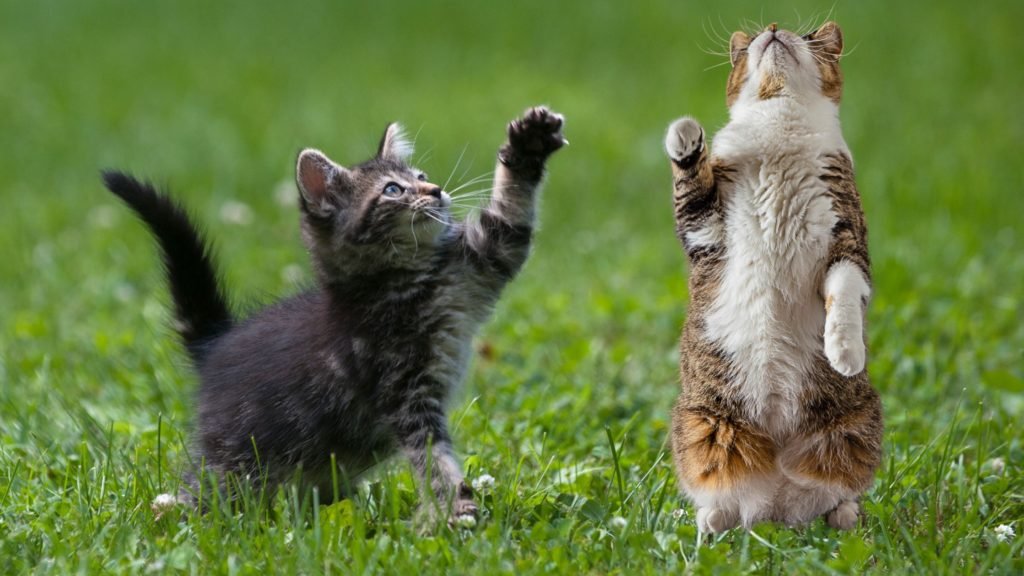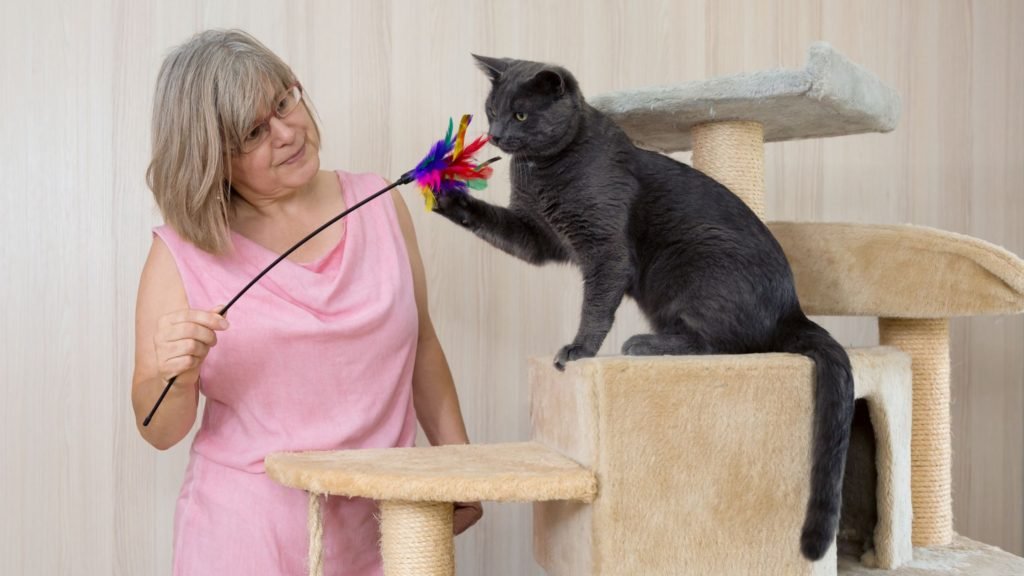Reveal the secret behind the question “Do cats mimic human behavior” and explore the scientific research, theories, and explanations illuminating this aspect of feline life. You’re beloved furry companions, cats, exhibit surprising talents in mimicking human behavior. Their unique capacity to learn and adapt sets them apart from other domesticated animals, making them fascinating creatures.
Nature or Nurture?
Delving into feline imitation provides valuable insights. It helps uncover whether innate curiosity or domestication drives this behavior. Observing how cats interact with their surroundings and humans can illuminate their learning patterns. Understanding the origin of this behavior can assist in improving cat care and training methods. Investigating the nature vs. nurture aspect of feline imitation is vital to unraveling the mysteries of their world.
Importance of Understanding Feline-Human Interactions
Understanding interactions foster trust and empathy. It nurtures emotional connections between cats and their caregivers, creating a deeper bond. By being aware of the underlying reasons for their actions, owners can respond more empathetically to their cats’ needs. This mutual understanding enhances the overall quality of life for cats and their human companions. As a result, the bond between the two strengthens, leading to a more fulfilling relationship.

Better Care and Training
Holistic Approach to Care
Understanding cat imitation enables better care. Owners can address their pets’ physical, emotional, and cognitive needs more effectively. Owners can tailor their care approach to their cats’ specific needs by acknowledging the reasons behind mimicry. This holistic approach considers all aspects of a cat’s well-being, leading to happier and healthier pets. Comprehensive care creates a more satisfying and harmonious relationship between cats and their owners.
Tailored Training Techniques
A better grasp of feline imitation helps develop tailored training techniques. Owners can consider their cats’ unique behaviors, preferences, and sensitivities, fostering harmonious coexistence. By understanding the motivation behind mimicry, owners can create personalized training plans that resonate with their cats. These customized techniques facilitate faster learning and better adaptation to new behaviors. This creates a more peaceful and enjoyable environment for cats and their human companions.
Social Learning in Cats
What is Social Learning?
Social learning is a vital cognitive process through which animals, including cats, acquire new behaviors, knowledge, or skills by observing and imitating other animals. This form of learning enables animals to adapt to their environment and thrive within their social groups without direct experience or trial and error.
Observational Learning
Cats have a natural propensity for keen observation. By attentively watching their feline counterparts, they learn essential survival skills, such as hunting techniques, grooming habits, and territory navigation. Observational learning helps them avoid potential dangers, interact with other cats, and integrate seamlessly into their environment.
Imitation
Imitation is a critical component of cats’ social learning repertoire. Cats often mimic their owners or other animals to perform specific actions or behaviors. Examples include opening doors using handles, copying play behaviors like fetch, or replicating other animals’ sounds. This ability demonstrates cats’ capacity for complex learning and problem-solving.
Age
A cat’s age significantly influences its ability to engage in social learning. Their rapidly developing brains make Kittens more receptive to new information and experiences during their formative years. In contrast, adult cats may be less inclined to learn through observation and imitation due to established habits and routines.
Environment
A cat’s intelligence mostly depends on the kind of training it receives. Enriched surroundings that provide physical, mental, and social stimulation promote cognitive development and encourage cats to explore and learn. Conversely, a deprived or monotonous environment can hinder a cat’s learning capacity and limit its exposure to new experiences.
Personality
Individual personality traits also significantly impact a cat’s propensity for social learning. Curious, outgoing, and friendly cats are more likely to learn quickly through observation and imitation. In contrast, shy, introverted, or anxious cats may be slower learners, needing more time and support to develop new skills and behaviors.

You May Also Interest: Can Weather Affect Cats Behavior? Discover The Truth
Bonding and Attachment
Feline Attachment Theory
Attachment theory, originally designed to study human relationships, may be applied to cats and their owners. This theory posits that cats form emotional bonds with their caregivers, significantly impacting their well-being and behavior.
Purring
Purring is a telltale sign of a cat’s attachment to its owner. This gentle, soothing sound often expresses contentment, trust, and affection, signaling a solid bond between felines and humans.
Kneading
Kneading, the rhythmic pressing of paws against a surface, is another sign of cat attachment. This comforting behavior, reminiscent of nursing kittens, indicates a cat’s sense of security and trust in its owner.
Following Their Owners
Cats that follow their owners around the house display a sign of attachment. This behavior demonstrates a cat’s desire to be close to its caregiver, seeking companionship and emotional support.
Secure
Cats with a secure attachment style display confidence and independence yet seek comfort from their owners when necessary. These cats exhibit a healthy balance of exploration and attachment, resulting in a harmonious relationship.
Insecure
Insecurely attached cats tend to be overly reliant on their owners, displaying anxious behaviors such as excessive vocalizations or constant need for reassurance. This attachment style may require additional patience and support from the owner.
Disorganized
Unpredictable, erratic behaviors characterize disorganized attachment in cats. These cats may show affection and avoidance, indicating an internal struggle between seeking comfort and fearing their caregiver. This attachment style may be indicative of past trauma or inconsistent care.

You May Also Interest: Flehmen Response Cat: The Art of Feline Scent Reading
Cats Mimicking Human Behavior
Sitting Like Humans
Some cats mimic human behavior by sitting upright, resembling humans lounging in chairs. This amusing posture demonstrates their adaptability and observational learning abilities.
Responding to Names
Like humans, cats can learn to recognize and respond to their names. This acquired behavior showcases their capacity for understanding verbal cues and forming associations with sounds.
Using the Toilet
Training a cat to use the loo is a fantastic display of emulation of human behavior. Their intelligence, flexibility, and capacity for solving problems are all on display in this ability.
Domestication’s Influence
Domestication has significantly affected cats’ ability to mimic human behavior. Living alongside humans for thousands of years has fostered feline adaptability, enabling them to learn from and coexist harmoniously with their human companions.
The Pros
Mimicry can strengthen the bond between cats and humans, enhancing mutual understanding and facilitating better communication, resulting in a more fulfilling relationship.
The Cons
On the other hand, cats may also mimic undesirable human behaviors, such as opening cabinets or turning on faucets. In such cases, owners should establish boundaries and provide appropriate training to discourage these actions.

